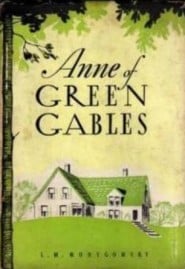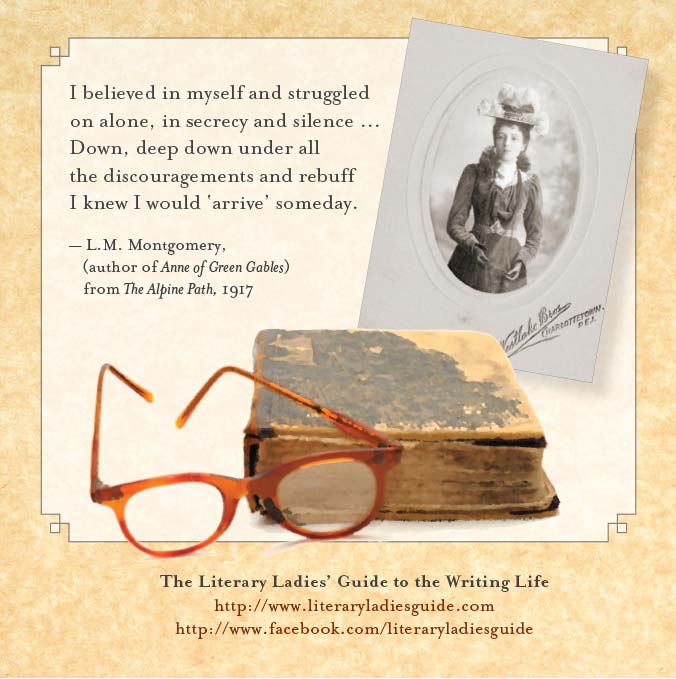Publishing Anne of Green Gables: How L.M. Montgomery Persevered
By Nava Atlas | On April 10, 2015 | Updated May 25, 2022 | Comments (0)

Like many authors battered by continual rejection of a manuscript, L.M. Montgomery gave up and placed the worn Anne of Green Gables manuscript in a hatbox and gave up. After it languished in a freezing attic for nearly a year, Maud, as she was known to her familiars, decided to give it one more shot, sending it to Boston publisher L.C. Page.
Serendipitously, there she had an ally—a Prince Edward Island expatriate named Miss Arbuckle. One of the company’s readers, she was enchanted with the novel’s romanticized Island setting.
Miss Arbuckle “quietly and persistently championed Anne to the other staff readers until several supported the novel,” according to Maria Rubio in Writing a Life: L.M. Montgomery.
She didn’t give up the dream
The Anne of Green Gables books have given joy to readers for generations. What if its author hadn’t decided to dust off the manuscript and given her dream one more shot at success?
Following, in Maud Montgomery’s own words from her journal pages of 1907, is how she persevered to find a publisher for the first installment in the Anne of Green Gables series:
. . . . . . . . . .

L.M. Montgomery on Her Writing Life
. . . . . . . . . .
“Brooding up” a heroine
I have always kept a notebook in which I jotted down, as they occurred to me, ideas for plots, incidents, characters and descriptions … in the spring of 1905 I was looking over this notebook in search of some suitable idea for a short serial I wanted to write for a certain Sunday School paper and I found a faded entry, written ten years before:
“Elderly couple apply to orphan asylum for a boy. By mistake a girl is sent them.” I thought this would do. I began to block out chapters, devise incidents and ‘brood up’ my heroine.
Somehow or other she seemed very real to me and I thought it rather a shame to waste her on an ephemeral little serial. Then the thought came, “Write a book about her. You have the central idea and character. All you have to do is spread it out over enough chapters to amount to a book.”
. . . . . . . . . .

Anne of Green Gables was published in 1908 —
this was the original cover
. . . . . . . . . .
Beginning the work of writing
I began the actual writing of it one evening in May and wrote most of it in the evenings after my regular work was done, through that summer and autumn, finishing it, I think, sometime in January 1906. It was a labor of love. Nothing I have written gave me so much pleasure to write.
I cast “moral” and “Sunday School” ideals to the winds and made my Anne a real human girl. Many of my own childhood experiences and dreams were worked up into its chapters … I typewrote it out on my old second-hand typewriter that never makes the capitals plain and doesn’t print “w” at all.
Submitting to publishers
The next thing was to find a publisher. I sent it to the Bobbs-Merrill firm of Indianapolis…This was a new firm that had recently come to the front with several “best sellers.” I thought I might stand a better chance with a new firm than with an old established one which had already a preferred list of writers. Bobbs-Merrill very promptly sent it back with a formal printed slip of rejection. I had a cry of disappointment.
Then I went to the other extreme and sent it to the MacMillan Co. of New York, arguing that perhaps an “old established firm” might be more inclined to take a chance with a new writer. The MacMillan Co. likewise sent it back. I did not cry this time but sent it to Lothrop, Lee and Shepard of Boston, a sort of “betwixt and between” firm. They sent it back.
Then I sent it to the Henry Holt and Co. of New York. They rejected it, but not with the formal printed slip of the others. They sent a typewritten screed stating that their readers had found “some merit” in the story but “not enough to warrant its acceptance.”
This “damning with faint praise” flattened me out as not even the printed slips could do. I put “Anne” away in an old hat box in the clothes room, resolving that some day when I had time I would cut her down to the seven chapters of my original idea and send her to the aforesaid Sunday School paper.
. . . . . . . . . . . .

L.M. Montgomery, Writing, and Motherhood
. . . . . . . . . . . .
One more try
The MS lay in the hat box until one day last winter when I came across it during a rummage. I began turning over the sheets, reading a page here and there. Somehow, I found it rather interesting. Why shouldn’t other people find it so? “I’ll try once more,” I said, and I sent it to the L.C. Page Co.
They took it and asked me to write a sequel to it. The book may or may not sell well. I wrote it for love, not money—but very often such books are the most successful—just as everything in life that is born of true love is better than something constructed for mercenary ends.
She knows absolutely nothing of the publisher
I don’t know what kind of publisher I’ve got. I know absolutely nothing of the Page Co. They have given me a royalty of ten percent of the wholesale price, which is not generous even for a new writer, and they have bound me to give them all my books on the same terms for five years.
I didn’t altogether like this but I was afraid to protest, lest they might not take the book, and I am so anxious to get it before the public. It will be a start, even if it is no great success.
Well, I’ve written my book. The dream dreamed years ago in that old brown desk in school has come true after years of toil and struggle. And the realization is sweet—almost as sweet as the dream! — L.M. Montgomery, from her Journals, 1907
. . . . . . . . . . . .

L.M. Montgomery: Writing Without Time or Privacy
Leave a Reply